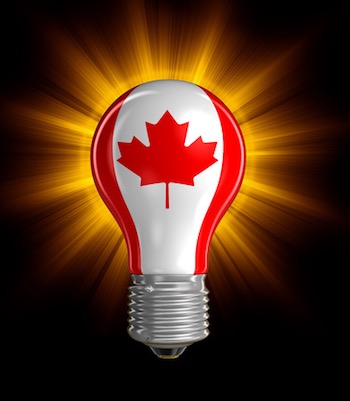 The population of Canada is barely more than 10 percent of the population of the United States, and as such is mostly never considered in the list of countries in which an inventor wishes to patent an invention. However, patenting in Canada is very advantageous and should be considered more often.
The population of Canada is barely more than 10 percent of the population of the United States, and as such is mostly never considered in the list of countries in which an inventor wishes to patent an invention. However, patenting in Canada is very advantageous and should be considered more often.
Even with its relatively small population, Canada is the largest export market for the US, with about 200 billion dollars worth of exports each year. Exporting to Canada from the US is a well-known process, and an inventor or company wishing to do so will have no difficulty in finding a company that can handle all the required paperwork and logistics. Even if one does not wish to export to Canada, licensing or sale of a patent is always a possibility. I have many clients whose business model revolves around finding products that sell well in the US and which are likely to sell well in Canada, having these products manufactured in China, and selling them in Canada. I often get asked to confirm that one of these products is not protected by a patent in Canada. If there is no Canadian patent, my clients are able to profit from the US inventor’s ingenuity.
All this would not be very useful if obtaining a Canadian patent was an expensive process. However, that is not the case. First, Canadian government fees are small compared to those of many other countries. There are no extra claim fees and the only time application size changes a fee is at issuance. In addition, currently, the exchange rate between the Canadian and US dollars is favorable to US applicants. For example, for a small entity, the filing fee for a complete application is 200CA$, or about 150US$. Examination must be requested separately with payment of a fee, but the deadline for requesting examination is on the fifth anniversary of filing. Applicants who delay examination often have good indications of the likelihood of obtaining a patent and commercial success by that date.
In addition, the filing process is very simple and thus less expensive typically than the US filing process. In the case of an applicant who has very limited resources, publicly available information and Canadian Intellectual Property Office assistance phone line could be used to get all the requires information and perform the filing process. A foreign applicant will be required to name a Canadian representative, but many firms will charge nothing or only a small amount to be named as such in an already filed application, with the hope that more revenues will be generated by maintenance fees and office actions. Each year, we get contacted by foreign individuals who have filed their patent applications themselves and who now need our assistance due to this requirement.
The examination process is also very advantageous in Canada. First, as mentioned above, examination can be delayed for up to five years after filing. In the case of foreign applicants, the applicant has usually obtained a patent in his country or abandoned any hope of obtaining one by that time. Since the examination fee is only paid when examination is requested, this fee is never paid if the application is abandoned before requesting examination. Usually, claims that have been found allowable in the US or Europe, or claims of similar scope, are allowed in Canada. Canadian examination is usually fair and obviousness rejections, which can be problematic in the United States, are often easier to overcome in Canada. I have seen many cases over the years in which a US examiner issued obviousness rejections one after the other when simple amendments or arguments convinced the Canadian examiner that the invention was non-obvious. These amendments and arguments were often similar to the first ones presented in the US, which only resulted in the US examiner to cite additional documents which were not considered in Canada, even if Canadian examination occurred much later than the US one.
In Canada, maintenance fees are due annually, but they are much smaller than the corresponding European ones, for example. Also, maintenance fees can be paid in advance for more than one year in Canada. This helps in minimizing agent fees for cost conscious applicants. You can read more about it in my article Minimizing costs while ensuring foreign patent maintenance fees are timely paid. For example, an applicant who files an application in Canada as a large entity and who pays all maintenance fees up to the examination request deadline will pay only 300CA$ in government maintenance fees.
If the patent is infringed, litigation costs are usually much smaller in Canada than in the US, and settlement occurs often before large amounts of money have to be spent. The whole process is less complicated than in the US and the patent is harder to invalidate in Canada for many reasons.
In conclusion, once a patent application has been drafted for filing in the US, the additional cost of filing this application in Canada is only a small percentage of the total budget up to patent issuance. Canada is currently much more pro-patentee than the US. The upsides of filing a patent application in Canada are numerous and the financial risk taken, especially if for some reasons examination is not requested after five years, is relatively small.

![[IPWatchdog Logo]](https://ipwatchdog.com/wp-content/themes/IPWatchdog%20-%202023/assets/images/temp/logo-small@2x.png)

![[[Advertisement]]](https://ipwatchdog.com/wp-content/uploads/2024/04/Patent-Litigation-Masters-2024-banner-early-bird-ends-Apr-21-last-chance-938x313-1.jpeg)
![[Advertisement]](https://ipwatchdog.com/wp-content/uploads/2024/04/Patent-Litigation-Masters-2024-sidebar-early-bird-ends-Apr-21-last-chance-700x500-1.jpg)

![[Advertisement]](https://ipwatchdog.com/wp-content/uploads/2021/12/WEBINAR-336-x-280-px.png)
![[Advertisement]](https://ipwatchdog.com/wp-content/uploads/2021/12/2021-Patent-Practice-on-Demand-recorded-Feb-2021-336-x-280.jpg)
![[Advertisement]](https://ipwatchdog.com/wp-content/uploads/2021/12/Ad-4-The-Invent-Patent-System™.png)







Join the Discussion
One comment so far.
jbavis
November 25, 2016 01:42 pmSounds good except one big reason more aren’t pursuing Canada are loser-pays legal costs of the winner. For example: http://www.mondaq.com/canada/x/547416/Patent/Monetary+Consequences+For+Falsely+Alleging+Patent+Infringement